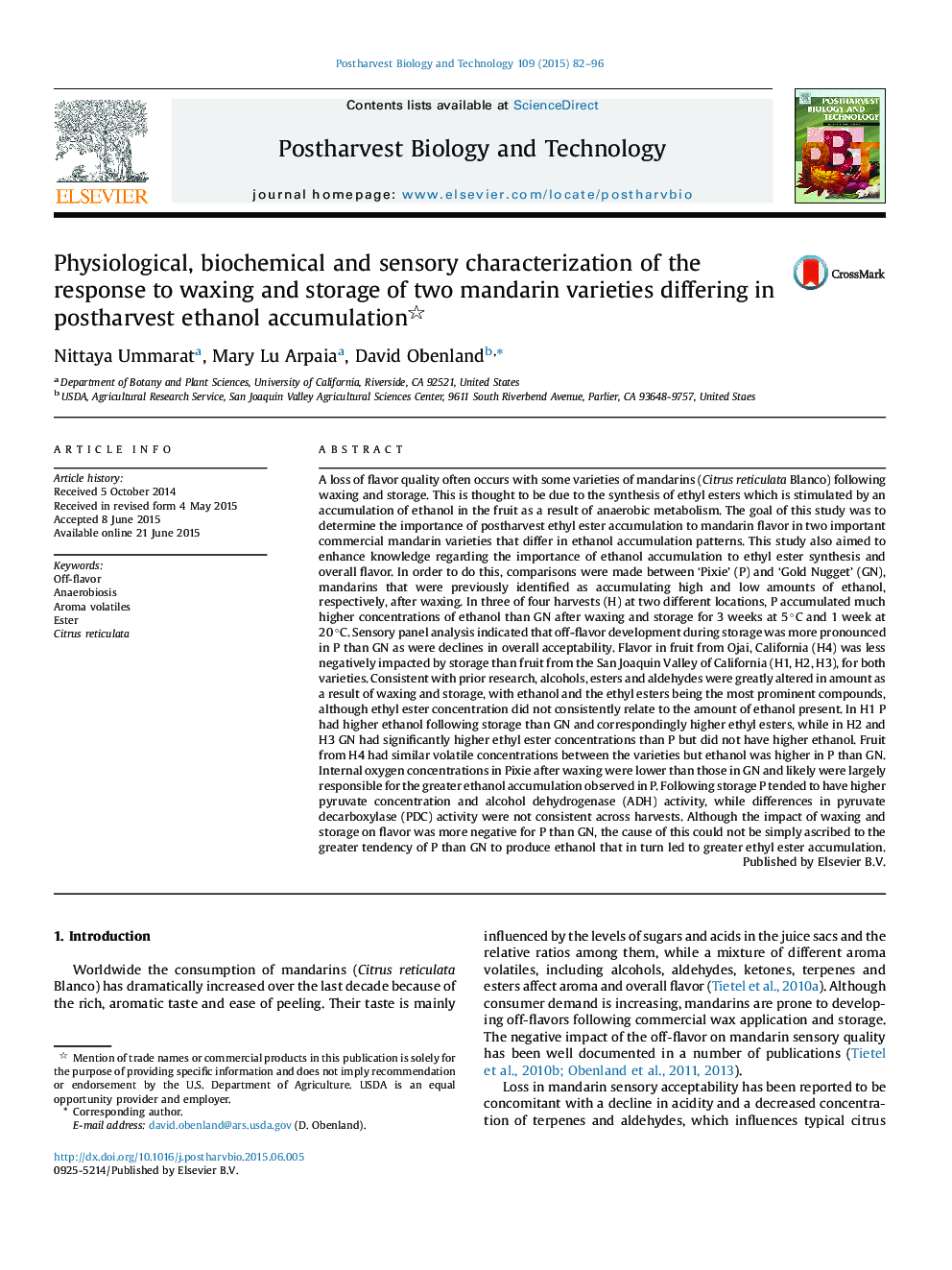| کد مقاله | کد نشریه | سال انتشار | مقاله انگلیسی | نسخه تمام متن |
|---|---|---|---|---|
| 4517961 | 1624985 | 2015 | 15 صفحه PDF | دانلود رایگان |
• Two mandarin varieties were compared that differ in ethanol accumulation after waxing.
• The variety with high ethanol after waxing had a lower internal oxygen concentration.
• Off-flavor development was most pronounced in the variety with highest ethanol.
• Ethyl ester content did not consistently relate to the amount of ethanol present.
• Differences in components of ethanol biosynthesis between the varieties were present.
A loss of flavor quality often occurs with some varieties of mandarins (Citrus reticulata Blanco) following waxing and storage. This is thought to be due to the synthesis of ethyl esters which is stimulated by an accumulation of ethanol in the fruit as a result of anaerobic metabolism. The goal of this study was to determine the importance of postharvest ethyl ester accumulation to mandarin flavor in two important commercial mandarin varieties that differ in ethanol accumulation patterns. This study also aimed to enhance knowledge regarding the importance of ethanol accumulation to ethyl ester synthesis and overall flavor. In order to do this, comparisons were made between ‘Pixie’ (P) and ‘Gold Nugget’ (GN), mandarins that were previously identified as accumulating high and low amounts of ethanol, respectively, after waxing. In three of four harvests (H) at two different locations, P accumulated much higher concentrations of ethanol than GN after waxing and storage for 3 weeks at 5 °C and 1 week at 20 °C. Sensory panel analysis indicated that off-flavor development during storage was more pronounced in P than GN as were declines in overall acceptability. Flavor in fruit from Ojai, California (H4) was less negatively impacted by storage than fruit from the San Joaquin Valley of California (H1, H2, H3), for both varieties. Consistent with prior research, alcohols, esters and aldehydes were greatly altered in amount as a result of waxing and storage, with ethanol and the ethyl esters being the most prominent compounds, although ethyl ester concentration did not consistently relate to the amount of ethanol present. In H1 P had higher ethanol following storage than GN and correspondingly higher ethyl esters, while in H2 and H3 GN had significantly higher ethyl ester concentrations than P but did not have higher ethanol. Fruit from H4 had similar volatile concentrations between the varieties but ethanol was higher in P than GN. Internal oxygen concentrations in Pixie after waxing were lower than those in GN and likely were largely responsible for the greater ethanol accumulation observed in P. Following storage P tended to have higher pyruvate concentration and alcohol dehydrogenase (ADH) activity, while differences in pyruvate decarboxylase (PDC) activity were not consistent across harvests. Although the impact of waxing and storage on flavor was more negative for P than GN, the cause of this could not be simply ascribed to the greater tendency of P than GN to produce ethanol that in turn led to greater ethyl ester accumulation.
Journal: Postharvest Biology and Technology - Volume 109, November 2015, Pages 82–96
